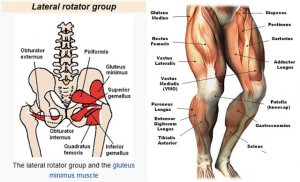I tried these for the first time the other day and I seem to have some mobility issues preventing me from getting my skis turned across the hill completely while keeping my chest and hips facing downhill. I am tremendously inflexible especially in the hips. Is that an issue sometimes.
A second question does type of ski make a difference. I would think a straighter sidecut ski would be easier than a deep sidecut ski.
Pivot slips are notoriously hard to learn.
Skis
It's not your skis. Pivot slips can be done with sharp race slaloms with a very short turn radius and a strong tendency to grab an edge and turn. You'll need to learn to control your skis, whatever their shape, so they stay flat and parallel as you rotate them on the snow.
Terrain
Where you do the task matters. It's hard to do pivot slips on flat terrain because momentum doesn't provide much help. It's easier with some pitch. It's harder to do them on deep soft wet snow that gets pushed downhill and eventually builds up a wall below the skis. It's easier to do them on hard snow and even on ice.
Flexibility for the rotation of the legs in the hip sockets
Your inflexibility may not be the issue stopping you from being able to do pivot slips. It may be the unfamiliarity of the movement pattern. This movement of the legs separate from the upper body is not used in other sports. You may be flexible enough to do this movement without spending a season in the gym stretching your hips. The unfamiliarity of the separation between upper body and lower body certainly makes this maneuver difficult for many people. You could use a trainer to walk you through the movement pattern.
Release
Also, the release matters and needs to be practiced, once you get the rotation of the legs separate from the upper body going. I'm happy to see the PSIA Matrix video above shows both an extension release and a flexion release being used in their models. They both work, and they work when blended as well.
Body Centered between the skis
You need to keep your body balanced between the two skis, not uphill of them as many skiers do when their skis point across the hill.
Body Centered over the skis
If you are habitually aft over the tails of your skis, then even once you get the separation and rotation working and the release working, you will get forbidden travel. Pivot slips are supposed to take you straight down the hill without any left-right travel. So there's that too.
If you are serious about doing pivot slips, find someone to work with you who already knows how to do them and who has some experience teaching adults this drill. Then realize it may take repeated tries over the season to get them working. Doing pivot slips helps get the important things listed above dialed in so you can use them in regular turns. Learning them is definitely worth doing.



